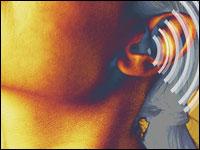
Aug 19, 2010
Anne Fernald explains our need to goochie-goochie-goo at every baby we meet, and absolves us of our guilt. This kind of talk, dubbed motherese, is an instict that crosses cultural and linguistic boundaries. Caecilius was goochie-goochie-gooing in Rome; Grunt was goochie-gooing in the caves. We at Radiolab did our own study of infant-directed speech, recording more than a dozen different parents. The melodies of these recordings illustrate Fernald's findings that there are a set of common tunes living within the words that parents all over the world intone to their babies.
Then, science reporter Jonah Lehrer takes us on a tour through the ear as we try to understand how the brain makes sense of soundwaves and what happens when it can't. Which brings us to one particularly riotous example: the 1913 debut performance of Stravinsky's "Rite of Spring." Jonah suggests that the brain's attempt to tackle disonant sounds resulted in old ladies tackling each other. Disney might even show up for the brawl.
Correction: An earlier version of this piece incorrectly stated the dates of two performances of “Rite of Spring” and the time that passed between them. The performance that inspired rioting occurred on May 29th, 1913. The second performance that we discussed occurred in April of 1914. The audio has been adjusted to reflect this fact.
Correction: An earlier version of this piece incorrectly stated that the “Rite of Spring” was used in the movie “Fantasia” during the part that featured mushrooms. It was in fact used during the part that featured dinosaurs. The audio has been adjusted to reflect this fact.